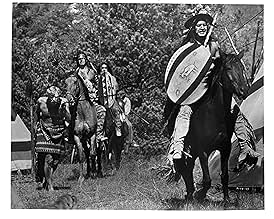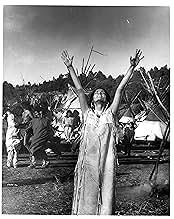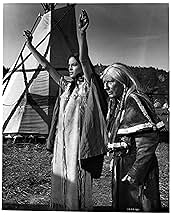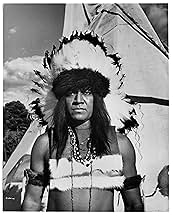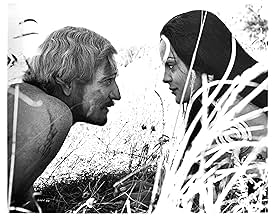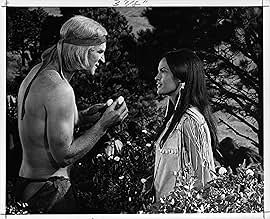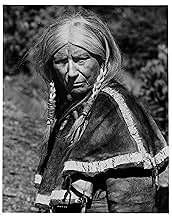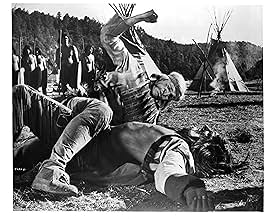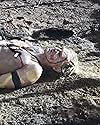NOTE IMDb
6,8/10
9,9 k
MA NOTE
En 1825, un aristocrate anglais est capturé par des Amérindiens. Il vit avec eux et commence à comprendre leur mode de vie. Finalement, il est accepté comme membre de la tribu et aspire à de... Tout lireEn 1825, un aristocrate anglais est capturé par des Amérindiens. Il vit avec eux et commence à comprendre leur mode de vie. Finalement, il est accepté comme membre de la tribu et aspire à devenir leur chef.En 1825, un aristocrate anglais est capturé par des Amérindiens. Il vit avec eux et commence à comprendre leur mode de vie. Finalement, il est accepté comme membre de la tribu et aspire à devenir leur chef.
- Réalisation
- Scénario
- Casting principal
- Récompenses
- 1 victoire et 2 nominations au total
Judith Anderson
- Buffalo Cow Head
- (as Dame Judith Anderson)
Lina Marín
- Thorn Rose
- (as Lina Marin)
Avis à la une
Although this film appeared to be a western for the 1970's, the story was not new. The writer, Dorothy M. Johnson, originally wrote it for the T.V. series Wagon Train (1957-65). Ralph Meeker was cast then in the Richard Harris role, and an excellent job he made of it, in his quiet way. A good story will always stand the test of time, as this proves.
This movie offered a different perspective of the Sioux, and although controversial, it is worth a view. Director Elliot Silverstein doesn't glamorize the Indians and he doesn't make them victims of white injustice. He just tells it like it is, and I have to admire him for it. Many activists protested what they believed to be inaccuracies; nonetheless, the film is the other side of "Dances With Wolves" (really, it's more like "Run of the Arrow"). For an in-depth interview with Silverstein and the making of "A Man Called Horse," read "Making the White Man's Indian: Native Americns and Hollywood Movies." It's a great behind-the-scenes read of this and other popular Western pictures.
In 1825, the Sioux, leaded by Yellow Hand (Manu Tupou), capture the English nobleman John Morgan (Richard Harris), while hunting in the United States of America. John is brutally treated like an animal by the Indian, and is given to help Buffalo Cow Head (Judith Anderson), the mother of Yellow Hand, as if he were a horse. Without understanding the language and behavior of the Sioux, he is helped by Batise (Jean Gascon), a white man made prisoner and mutilated by the Indians five years ago. Batise translates and explains the Sioux's culture for John, plotting to escape some day back to the civilization with him. After an undefined long time later, John loses his snobbish behavior and is reasonably integrated to the Sioux. One day, he kills two enemies Shoshones, who were spying and stalking the Sioux, and gains the respect of the Sioux and love of the sister of Yellow Hand, Running Deer (Corinna Tsopei). John marries Running Deer and integrates to their culture, and after a tragic attack of the Shoshones to the Sioux tribe, he becomes their leader. "A Man Called Horse" is a spectacular and powerful classic western of the 70's. The first time I saw this movie, I was a teenager and left the theater completely astonished with such a different story in that time and the violence of the scenes. Two days ago, I bought the VHS and yesterday I saw it again, and it is still a very impressive film, with magnificent performances of the cast, highlighting Richard Harris and Judith Anderson. The production is very careful, being mostly spoken in Sioux, and depicting in a realistic way, the life, the behavior, the common laws and the moral practices of the Sioux. I believe that "A Man Called Horse", with the Sioux, "Soldier Blue", with the Cheyenne and "Little Big Man", all of them from 1970, were among the first movies to show the lives of prisoners of the North American Indians in their tribes. The amazing scene of John Morgan suspended by his chest in an Indian ceremony is unforgettable and very impressive. My vote is ten.
Title (Brazil): "Um Homem Chamado Cavalo" ("Spectacular Classic Western")
Title (Brazil): "Um Homem Chamado Cavalo" ("Spectacular Classic Western")
I first saw this film in the theatre when it came out in 1970. It was a welcome departure from earlier films about pioneers sitting among their circled wagons shooting whooping Indians like ducks in an arcade.
I saw it last weekend for the first time since, and I think that it holds up well. Whatever the flaws, it is a reasonably good depiction of Dakota Sioux going about their business in the 1820s.
This movie demonstrates that a story can be told with very little dialog and a lot of non-verbal expression. Harris might be the most prominent character but, cumulatively, the cast of small characters weighs in just as heavy.
I saw it last weekend for the first time since, and I think that it holds up well. Whatever the flaws, it is a reasonably good depiction of Dakota Sioux going about their business in the 1820s.
This movie demonstrates that a story can be told with very little dialog and a lot of non-verbal expression. Harris might be the most prominent character but, cumulatively, the cast of small characters weighs in just as heavy.
One of the first films to ever deal with the relationship between white men and Native Americans that wasn't slanted towards the white man, A MAN CALLED HORSE was released during the same year as the excellent Arthur Penn film LITTLE BIG MAN and the ultra-violent SOLDIER BLUE, which also dealt with the white man/Indian conflict. Richard Harris gives a great performance as an Englishman who loses his wagon team to, and is captured by, a group of Sioux Indians in the Dakota territory of the mid-1800s. He soon learns their ways of living, which primitive as they might be to us and to him are very traditional. Though the film is rated 'PG', be forewarned that there are scenes of violence and bloodshed (particularly the Sun Vow sequence) that could have gotten this film an 'R' (or a 'PG-13'), so the film is not exactly for kids. Nevertheless, it is worth seeing.
Le saviez-vous
- AnecdotesThe story is based on the experience of Cabeza de Vaca, a Spanish soldier captured by indigenous Americans in 1528.
- GaffesThroughout the film the actress playing Running Deer can be seen with medium long, nicely manicured fingernails.
- Versions alternativesOld German VHS version includes many alternate/more violent takes that are not on the US DVD (whereas the version on the DVD is the same as in the US), especially the ending is almost completely recut. On the other hand the US version includes a few lines which are not in the German version.
- ConnexionsEdited into Commercial Entertainment Product (1992)
Meilleurs choix
Connectez-vous pour évaluer et suivre la liste de favoris afin de recevoir des recommandations personnalisées
Détails
- Date de sortie
- Pays d’origine
- Langues
- Aussi connu sous le nom de
- Un hombre llamado Caballo
- Lieux de tournage
- Sociétés de production
- Voir plus de crédits d'entreprise sur IMDbPro
Box-office
- Montant brut aux États-Unis et au Canada
- 1 941 247 $US
- Montant brut mondial
- 44 000 000 $US
- Durée
- 1h 54min(114 min)
- Mixage
- Rapport de forme
- 2.35 : 1
Contribuer à cette page
Suggérer une modification ou ajouter du contenu manquant


